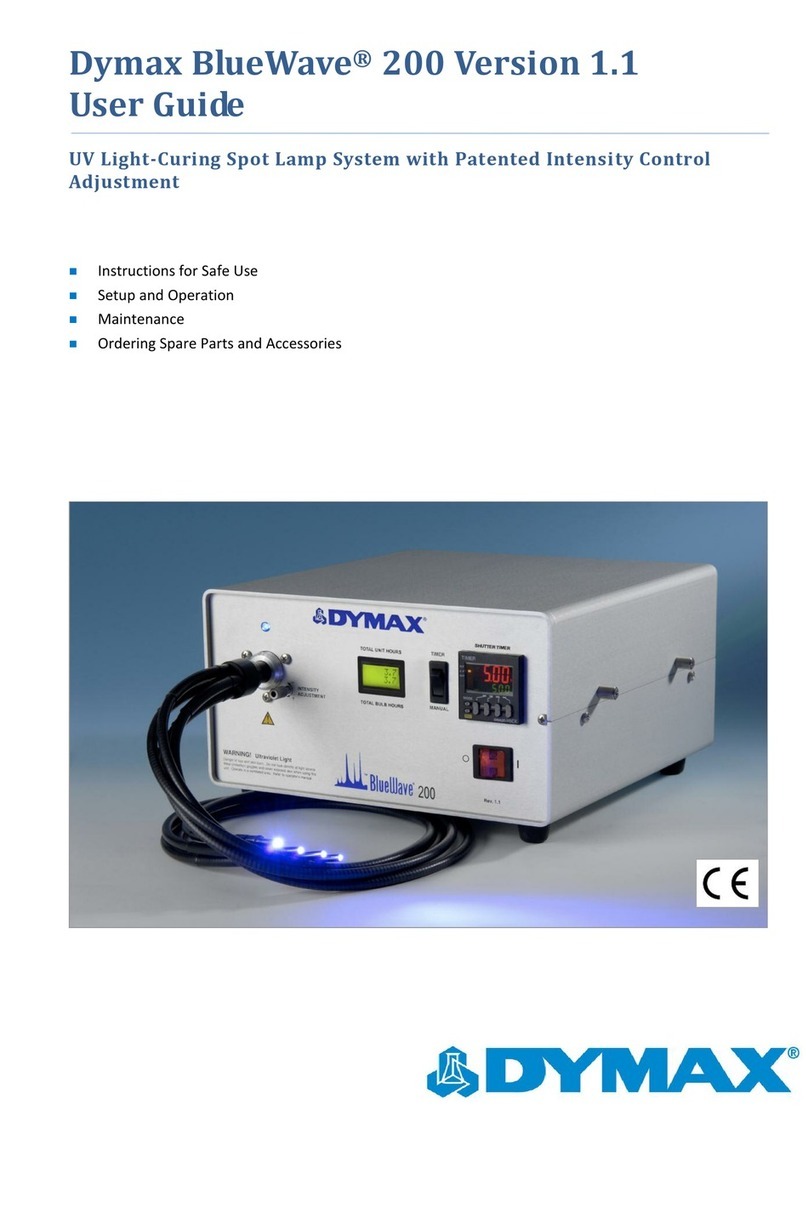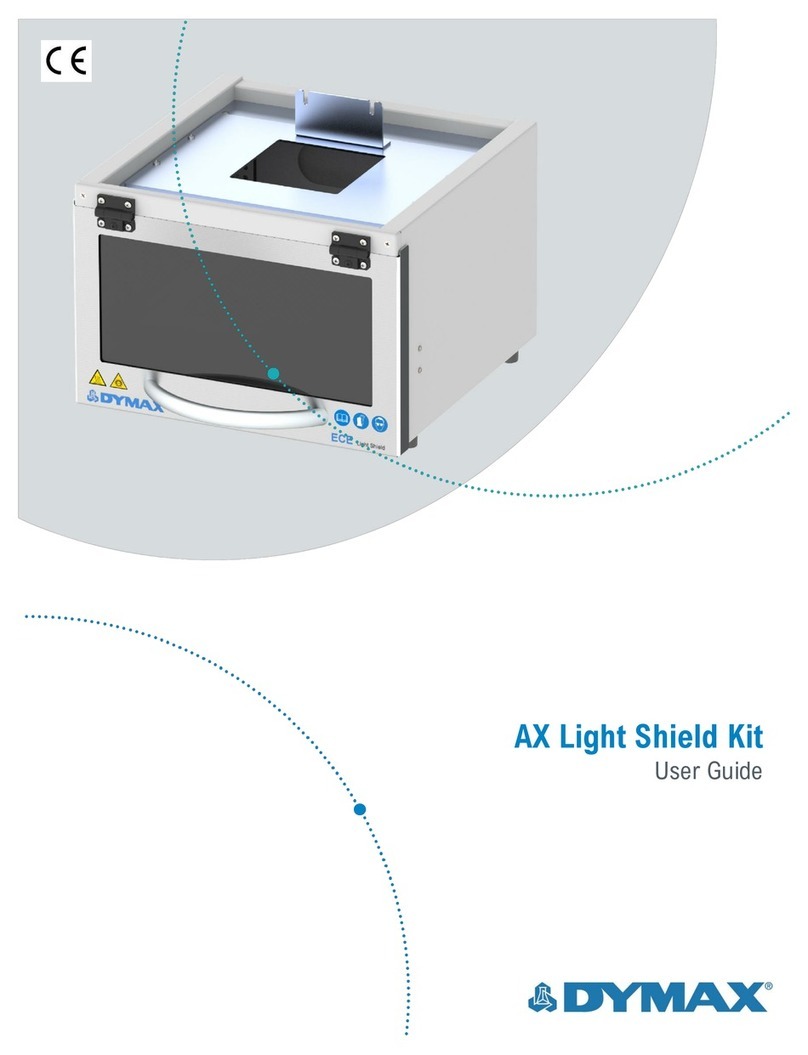
Dymax BlueWave® 200 Version 3.0 User Guide
Contents
Introduction.................................................................................................................................................... 5
Introduction to the User Guide ....................................................................................................................................... 5
Where to Get Help .......................................................................................................................................................... 5
Safety.............................................................................................................................................................. 5
General Safety Considerations ........................................................................................................................................ 5
Specific Safety Considerations......................................................................................................................................... 5
Dymax UV Light-Curing System Safety Considerations ................................................................................................... 6
Product Overview ........................................................................................................................................... 8
Description of the BlueWave 200.................................................................................................................................... 8
Unpacking the BlueWave 200 ......................................................................................................................... 9
Unpacking and Inspecting Your Shipment....................................................................................................................... 9
Parts Included with the BlueWave 200 Spot Lamp.......................................................................................................... 9
Setting Up the BlueWave 200 ....................................................................................................................... 10
Becoming Familiar with the Controls ............................................................................................................ 11
Turning the BlueWave 200 On ...................................................................................................................... 12
Setting an Operating Mode........................................................................................................................... 13
Introduction to Operating Modes ................................................................................................................................. 13
Choosing an Operating Mode........................................................................................................................................ 13
Operating in Manual Mode........................................................................................................................... 17
Manual Mode Description............................................................................................................................................. 17
Procedure ...................................................................................................................................................................... 17
Operating in Timer Mode.............................................................................................................................. 18
Timer Mode Description................................................................................................................................................ 18
Procedure to Adjust Timer ............................................................................................................................................ 18
Operating in PLC Mode ................................................................................................................................. 20
PLC Mode Description ................................................................................................................................................... 20
Start-Up Screen for PLC Mode....................................................................................................................................... 20
Using the PLC Switch ..................................................................................................................................................... 21
Wiring the PLC Interface................................................................................................................................................ 23
PLC Front Panel Emergency Stop................................................................................................................................... 26
Troubleshooting the PLC Interface ................................................................................................................................ 26
Setting the Intensity...................................................................................................................................... 27
Setting Up the Curing Process ....................................................................................................................... 27
Methods ........................................................................................................................................................................ 27
Maintaining Process Control ......................................................................................................................................... 28
Maintaining the BlueWave 200..................................................................................................................... 28
Bulb Replacement Warning........................................................................................................................................... 28
Bulb Replacement Procedure........................................................................................................................................ 28
Lightguide...................................................................................................................................................................... 30
Fan Filter........................................................................................................................................................................ 30
Fuse Replacement ......................................................................................................................................................... 30
System Cleaning ............................................................................................................................................................ 31






























